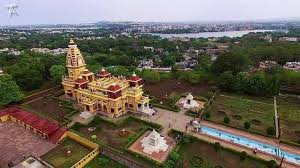In the remote, conflict affected belt of South Chhattisgarh, where hope has long wrestled with uncertainty, the Pradhan Mantri Awas Yojana (Gramin) has emerged as more than a housing scheme, it has become a metaphor for renewal. In the Naxal affected village of Niyad Nellanar in Santoshpur, the shelter that once seemed an unattainable dream has turned into a tangible symbol of stability, dignity, and peace.
Here, amidst fields once shadowed by fear, homes now rise brick by brick, embodying the idea that security begins not at the borders but within the walls of a dignified dwelling. Eighteen houses have already been completed in the first phase under the 2024–25 implementation cycle, signalling not just physical construction but psychological reconstruction. The visible change is etched not merely in cement and concrete, but in the quiet confidence of families stepping into lives anchored by safety and trust.
Among the beneficiaries is Lakhmu Panika, a widower who once tilled two acres of land under the constant anxiety of violence. “Owning a permanent house once felt like an impossible dream,” he recalls. “Now, I live with my son and grandson in peace and pride, under a roof that feels like the government’s promise made real.” His story, at once humble and profound, reflects the transformation occurring across the region, where development schemes are finding pathways even through the dense forests once defined by isolation.
For residents of Nellanar and neighbouring villages, a pakka house now represents more than shelter. It is a wall against vulnerability, a foundation for economic resilience, and a doorway to social inclusion. What once was a region of disengagement has begun to reimagine itself as part of the national mainstream.
In the language of policy, the PM Awas Yojana is counted among India’s flagship rural welfare programmes. But in villages like Santoshpur’s Nellanar, it is better understood as an act of quiet emancipation, a program that turns brick and mortar into instruments of faith. Under its glow, the message is unmistakable: where the state builds homes, fear recedes, where roofs rise, freedom takes root.




